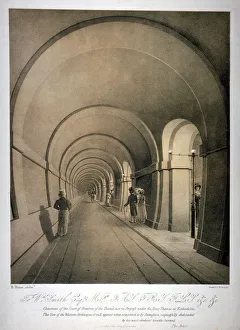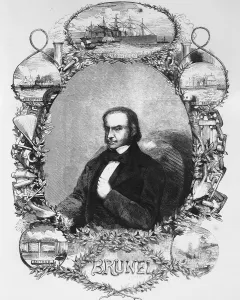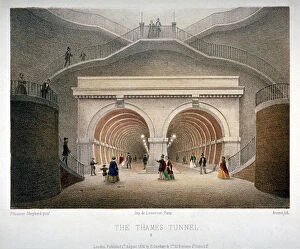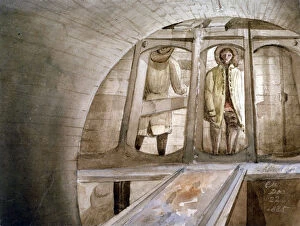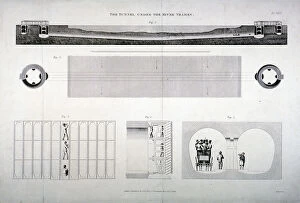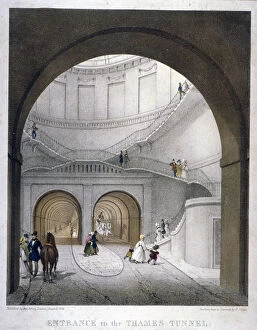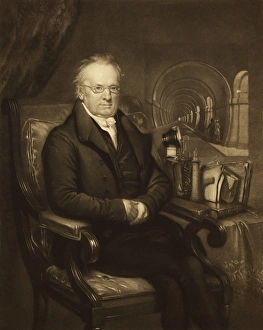Marc Isambard Brunel Collection
Marc Isambard Brunel, a visionary engineer ahead of his time, left an indelible mark on the world with his groundbreaking projects
All Professionally Made to Order for Quick Shipping
Marc Isambard Brunel, a visionary engineer ahead of his time, left an indelible mark on the world with his groundbreaking projects. One such marvel was the Thames Tunnel in London, a feat that showcased his engineering prowess and determination. In 1827, construction began on this ambitious project, aiming to connect Rotherhithe and Wapping beneath the mighty River Thames. The proposed western archway of the tunnel offered a glimpse into Brunel's grand vision for this subterranean marvel. Born in 1769, Marc Isambard Brunel possessed an innate genius that ran through generations as his son Isambard Kingdom Brunel followed in his footsteps. A portrait from the 1850s captures him as a distinguished civil engineer who revolutionized transportation infrastructure during the Victorian era. Another captivating oil painting from around 1835 immortalizes Sir Marc Isambard Brunel himself. The artist skillfully portrays him with an air of confidence and intellect befitting one of history's greatest engineers. A lithograph titled "A little insect and a great idea" symbolizes how even small creatures can inspire monumental innovations. It reflects Brunel's ability to think outside conventional boundaries and transform ideas into reality. One colored engraving showcases both Marc Isambard Brunel alongside a section of the awe-inspiring Thames Tunnel. This image encapsulates their intertwined destinies as they worked tirelessly to overcome numerous challenges during its construction. The completed Thames Tunnel finally opened for traffic in 1872 after years of perseverance and dedication by countless individuals involved in its creation. An engraving depicting it as it originally appeared stands testament to their collective achievement. Charles Balthazar Julien Fevret de Saint-Mé captured Marc Isambard Brunel's likeness in an exquisite portrait dating back to 1798 when he was just starting out on his path towards greatness. Little did anyone know then what incredible contributions he would make throughout his lifetime.

